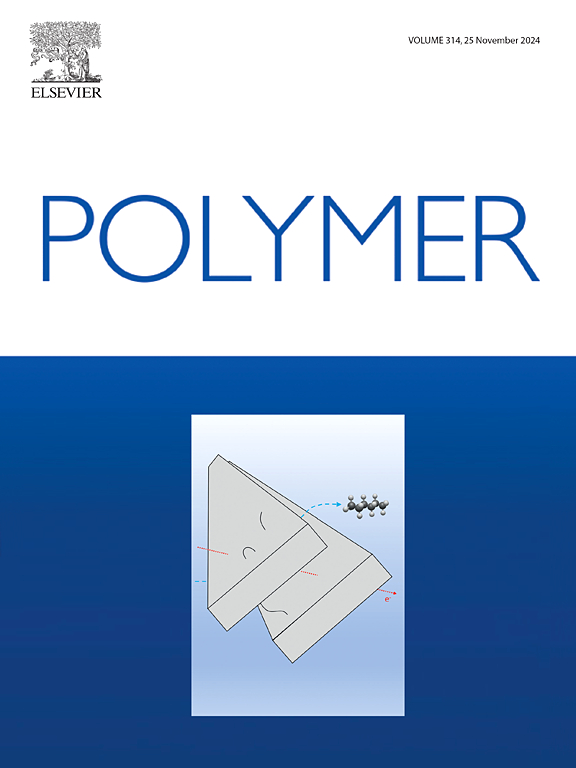Construction of interfacial reinforcement structure of polyphenylene sulfide foam for bead foaming molding
IF 4.1
2区 化学
Q2 POLYMER SCIENCE
引用次数: 0
Abstract
Polyphenylene sulfide (PPS) is a most widely used special engineering plastic, while the foam research is of great significance to expand its application and meet the requirements in aerospace, automobile, etc. In this work, the skinless PPS foam bead (S-PPS) was first prepared by surface-constrained sc-CO2 foaming method. Compared with the regular PPS foam bead, the solid skin layer of S-PPS foam bead is completely eliminated, exhibiting obvious honeycomb porous structure, while the cell density of the surface was even higher than that of the core layer. Furthermore, PPS-based foam was prepared with the surface adhesion-assisted molding method of foam beads by using epoxy resin (EP) as the interfacial adhesive layer. The surface affinity and adhesion strength of foam bead with EP reasin was enhanced by formation of surface porous structure, while compared with regular PPS@EP foam with clear adhesion interface between the foam beads and EP phase, for S-PPS@EP foam, the EP phase penetrated and anchored into the micropores on the surface of S-PPS beads, forming a strong mechanically interlocked structure, significantly enhancing both interfacial physical and chemical interactions between the two phases and thereby improving the overall mechanical performance of the bonded foam samples. With increasing adhesive content and interfacial layer thickness, the difference in compressive property between the two types of samples progressively widened. Specifically, the compressive strength of the S-PPS@EP foam samples was improved by approximately 42 % compared to the PPS@EP foam samples. This work provides a novel strategy for preparing special engineering plastic foam.


求助全文
约1分钟内获得全文
求助全文
来源期刊

Polymer
化学-高分子科学
CiteScore
7.90
自引率
8.70%
发文量
959
审稿时长
32 days
期刊介绍:
Polymer is an interdisciplinary journal dedicated to publishing innovative and significant advances in Polymer Physics, Chemistry and Technology. We welcome submissions on polymer hybrids, nanocomposites, characterisation and self-assembly. Polymer also publishes work on the technological application of polymers in energy and optoelectronics.
The main scope is covered but not limited to the following core areas:
Polymer Materials
Nanocomposites and hybrid nanomaterials
Polymer blends, films, fibres, networks and porous materials
Physical Characterization
Characterisation, modelling and simulation* of molecular and materials properties in bulk, solution, and thin films
Polymer Engineering
Advanced multiscale processing methods
Polymer Synthesis, Modification and Self-assembly
Including designer polymer architectures, mechanisms and kinetics, and supramolecular polymerization
Technological Applications
Polymers for energy generation and storage
Polymer membranes for separation technology
Polymers for opto- and microelectronics.
 求助内容:
求助内容: 应助结果提醒方式:
应助结果提醒方式:


